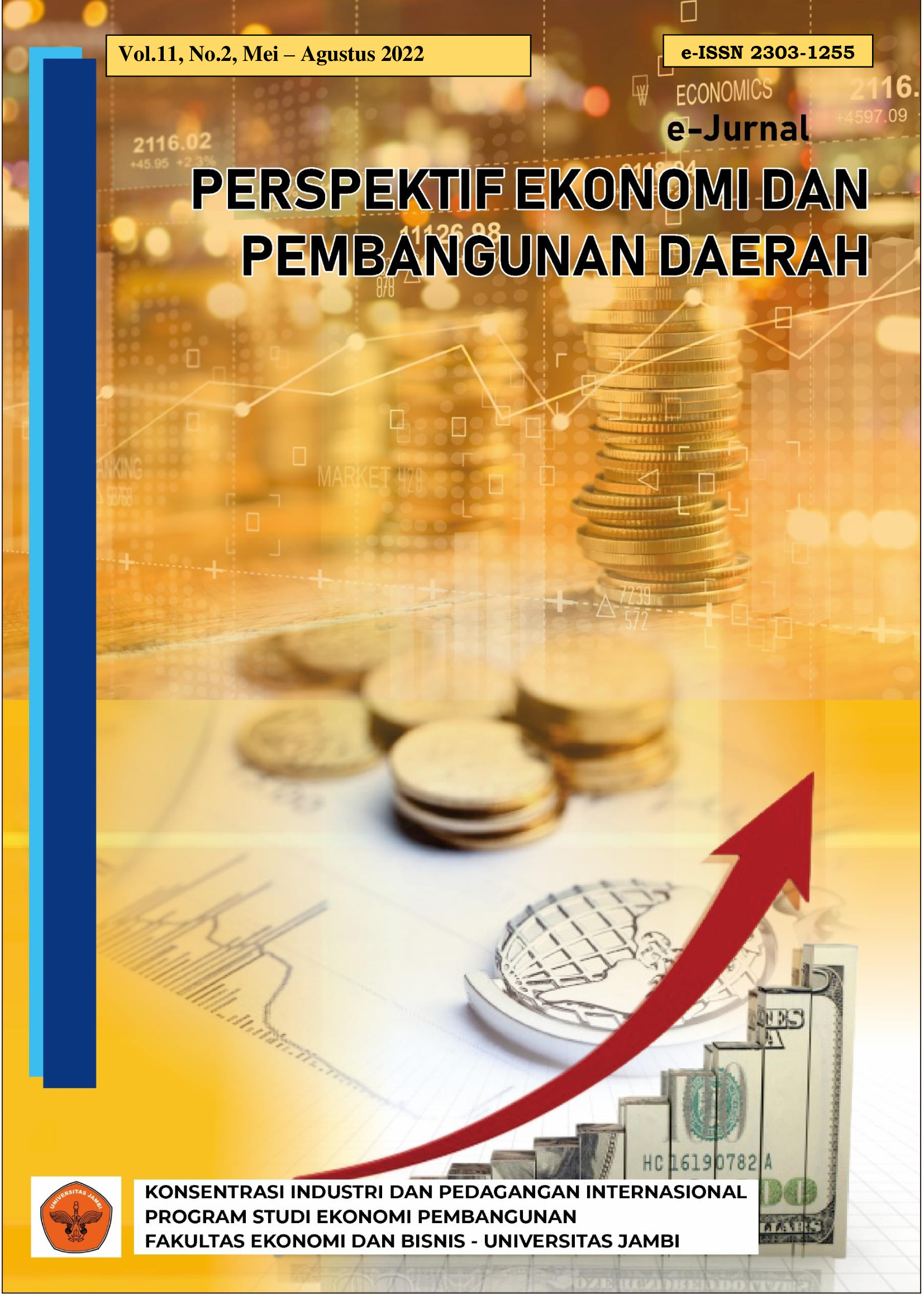Faktor – faktor yang mempengaruhi indeks pembangunan manusia di Provinsi Papua Tahun 2015-2019
DOI:
https://doi.org/10.22437/pdpd.v11i2.20778Keywords:
human development index, Inequality of income distribution, poverty levelAbstract
This research makes use of secondary facts with panel data evaluation, consisting of time series records for 2015-2019 and go section facts for 27 towns/districts in Papua Province. The secondary statistics taken encompass the Human improvement Index (HDI), Gross regional domestic Product (GRDP), income distribution, and poverty levels. The consequences of this have a look at indicate that there's a positive have an impact on among profits distribution at the Human development Index (HDI), poverty level which has a significant poor impact at the Human improvement Index (HDI), and profits distribution which has a high quality impact on the Human development Index (IPM) in Papua Province. 2015-2019 years.
Downloads
References
Baeti, N. (2013). Pengaruh pengangguran, pertumbuhan ekonomi, dan pengeluaran pemerintah terhadap pembangunan manusia Kabupaten/Kota di Provinsi Jawa Tengah Tahun 2007-2011. Economics Development Analysis Journal, 2(3), 85–98. https://doi.org/10.15294/edaj.v2i3.1984
BPS. (n.d.-a). Indeks pembangunan manusia.
BPS. (n.d.-b). Kemiskinan dan ketimpangan. Retrieved from https://www.bps.go.id/ subject/23/kemiskinan-dan-ketimpangan.html#subjekViewTab1
Ghozali, I. (2018). Aplikasi analisis multivariate dengan program IBM SPSS 25 (Edisi 9). Badan Penerbit Universitas Diponegoro: Semarang.
Gujarati, D. N. (2006). Dasar-dasar ekonometrika jilid 1 (J. A. Mulyadi, S. Saat, & H. W. Hardani, Eds.). Erlangga: Jakarta.
Gujarati, D. N., & Porter, D. C. (2012). Dasar-dasar ekonometrika (Edisi 5). Salemba Empat: Jakarta.
Ivanova, I., Arcelus, F. J., & Srinivasan, G. (1999). An assessment of the measurement properties of the human development index. Social Indicators Research, 46(2), 157–179. https://doi.org/10.1023/A:1006839208067
Kuncoro, M. (2010). Ekonomi pembangunan teori, masalah, dan kebijakan. Unit Penerbit dan Percetakan Akademi Manajemen Perusahaan YKPN: Yogyakarta.
Laderchi, C. R. (1997). Poverty and its many dimensions: the role of income as an indicator. Oxford Development Studies, 25(3), 345–360. https://doi.org/ 10.1080/13600819708424139
Mirza, D. S. (2012). Pengaruh pendapatan asli daerah, belanja modal dan indeks pembangunan manusia. Economics Development Analysis Journal, 1(1). https://doi.org/10.24843/eja.2021.v31.i02.p11
Syahrum, & Salim. (2012). Metodologi penelitian kuantitatif. Citapustaka Media: Bandung. Retrieved from http://repository.uinsu.ac.id/id/eprint/553
Todaro, M. P. (2003). Economics development in tne third world (4th ed.). Longman Group Ltd: New York.
Todaro, M. P., & Smith, S. C. (2006). Economic development. Erlangga: Jakarta.
Todaro, M. P., & Smith, S. C. (2009). Economic development (eleventh). Pearson Education limited: Inggris.
United Nations Development Programme (UNDP). (2011). Human development report 2011. New York: Oxford University Press.
Widarjono, A. (2018). Ekonometrika (Edisi Keli). UPP STIM YKPN: Yogyakarta.
Downloads
Published
How to Cite
Issue
Section
License
Copyright (c) 2022 Mandu Chaironi, Lucia Rita Indrawati

This work is licensed under a Creative Commons Attribution 4.0 International License.


